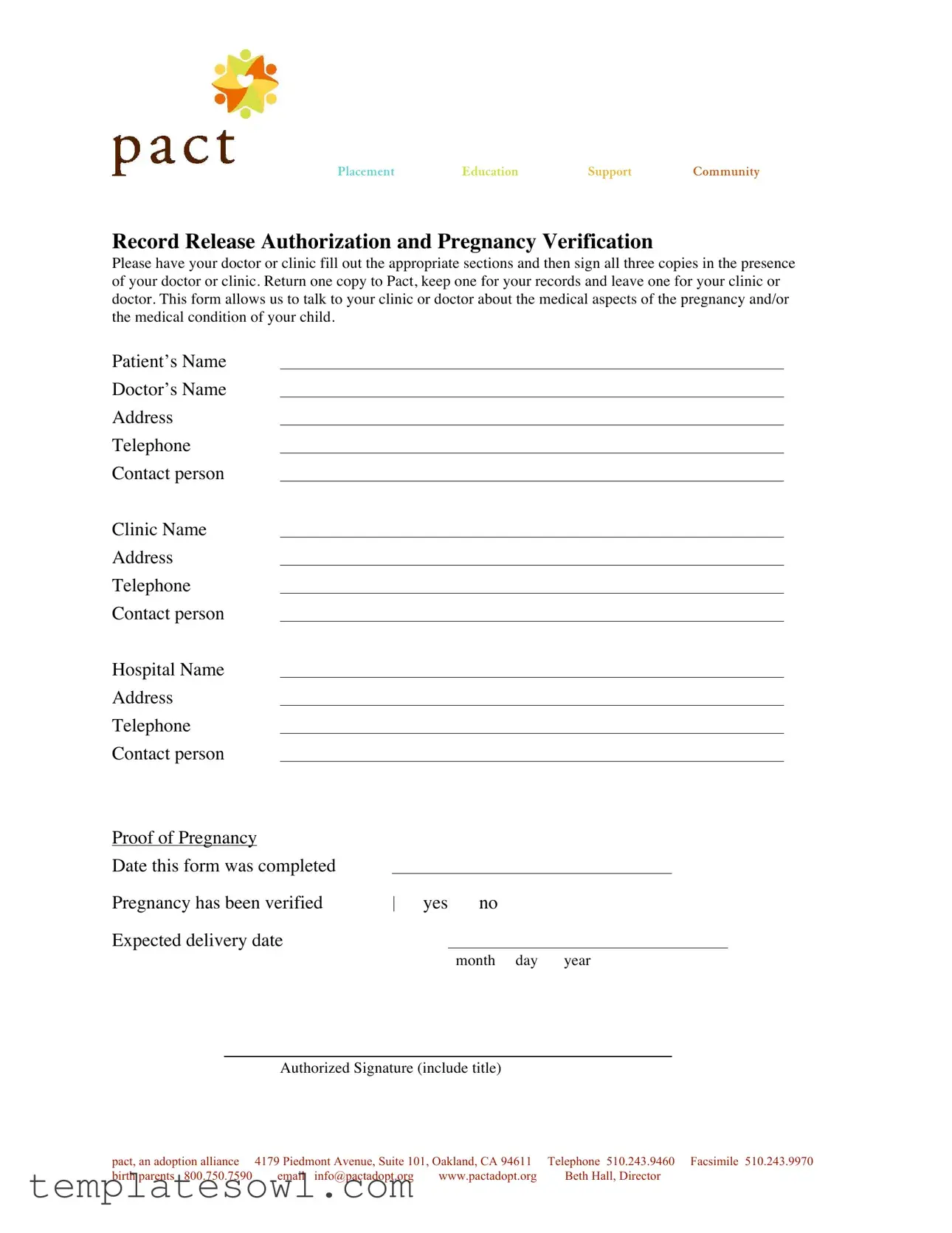Placement |
Education |
Support |
Community |
Record Release Authorization and Pregnancy Verification
Please have your doctor or clinic fill out the appropriate sections and then sign all three copies in the presence of your doctor or clinic. Return one copy to Pact, keep one for your records and leave one for your clinic or doctor. This form allows us to talk to your clinic or doctor about the medical aspects of the pregnancy and/or the medical condition of your child.
Patient’s Name
Doctor’s Name
Address
Telephone
Contact person
Clinic Name
Address
Telephone
Contact person
Hospital Name
Address
Telephone
Contact person
Proof of Pregnancy
Date this form was completed
Pregnancy has been verified |
[ ] yes[ ] no |
Expected delivery date
month day year
Authorized Signature (include title)
pact, an adoption alliance |
4179 Piedmont Avenue, Suite 101, Oakland, CA 94611 |
Telephone 510.243.9460 Facsimile 510.243.9970 |
birth parents 800.750.7590 |
email info@pactadopt.org |
www.pactadopt.org |
Beth Hall, Director |
Prenatal medical record release
I, ______________________________________, hereby authorize the release of any and
all information and/or records relating to my care including history, diagnosis, reports, treatments, labs, or x-rays in your possession while a patient at your facility to Pact: An Adoption Alliance, the adoptive parents, and the adoptive parents’ physician.
_______________________________________ |
____________ |
Patient’s Signature |
Date |
Child’s Record Release Authorization
I, ___________________________________________________, being the parent of
name of birth parent
_______________________________________ a minor child born on
name of child as it appears on birth certificate
____________________________,
date and time of birth
do hereby authorize the release of any and all of the records relating to the care of said child, including history, diagnosis, reports, treatments, labs, or x-rays in your possession while a patient at your facility to Pact: An Adoption Alliance, the adoptive parents, and the adoptive parents’ physician.
____________________________________ |
_________________ |
Parent’s Signature |
Date |
pact, an adoption alliance |
4179 Piedmont Avenue, Suite 101, Oakland, CA 94611 |
Telephone 510.243.9460 Facsimile 510.243.9970 |
birth parents 800.750.7590 |
email info@pactadopt.org |
www.pactadopt.org |
Beth Hall, Director |

